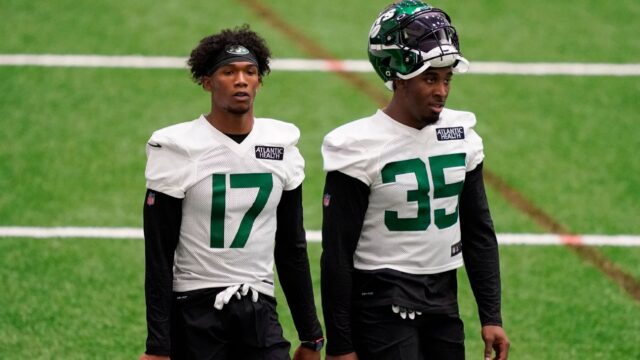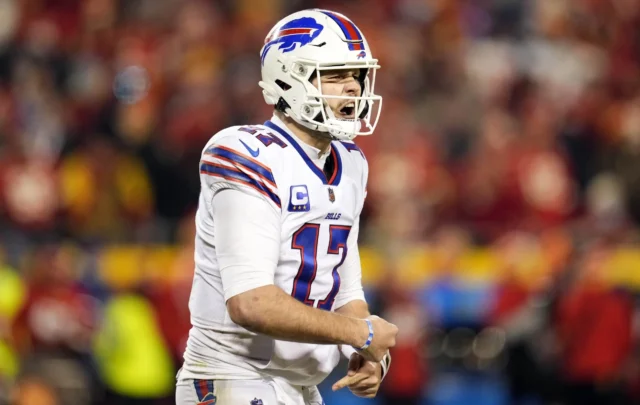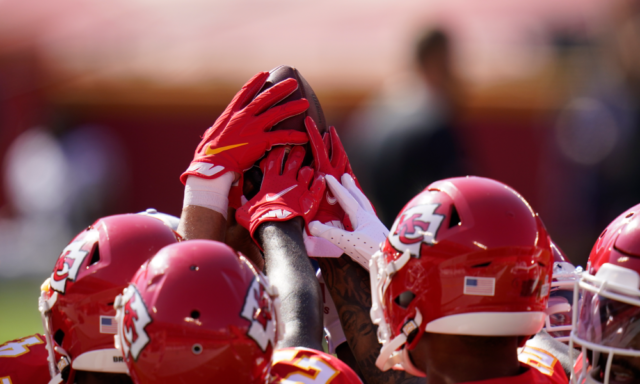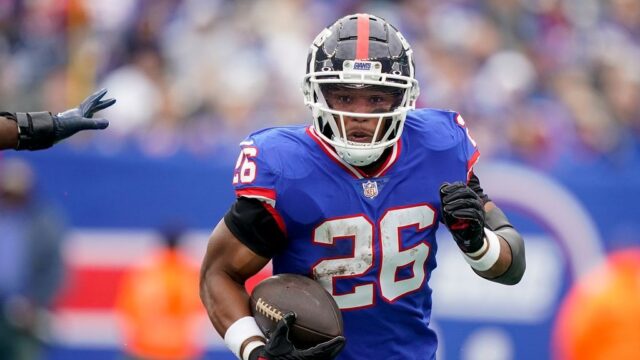
With the NFL season in full swing, maybe you felt like you were missing out if your social circle’s been absorbed with all things fantasy football. They’re probably constantly checking scores and rankings, talking with one another to compare performance and listening to fantasy football podcasts.
If you’re feeling left out, maybe you’ve committed to next year as the one you finally get involved with fantasy football to see what all the fuss is about.
If that sounds like the situation you’re in, the following is a complete guide to fantasy football from a beginner’s standpoint.
What is Fantasy Football?
Fantasy football is a game, and when you play, you’re acting as an owner of a team. You’re building a team of players from real NFL players, and you’re then competing against other owners in your league, scoring points based on the performance of the players you choose, based on actual NFL games.
The concept is simple overall, but the application gets very complex.
There are two broad categories of fantasy football games. There are season-long and daily fantasy. Then, within these broad categories are subcategories, such as different types of leagues.
Owners begin by choosing from a pool of available NFL players, and your team is broken down typically into positions like running backs, wide receivers, quarterbacks, and tight ends. These are referred to as skill positions, and most league owners choose only from these positions. Some leagues will also add defenses, placekickers, and individual defensive players.
At the end of the week, when you’re competing against other teams in your league, if you have the most points, you win your matchup. Your standings are calculated like traditional sports leagues, and you’re competing for entry into the playoffs based on your standings.
Once the playoffs start, the teams that are left go head-to-head in a tournament format, determining the league winner.
All of the activity of fantasy football takes place within the NFL season, that’s 16 games. The regular fantasy season is usually the first 13 or 14 weeks of the actual NFL season.
Then, the playoffs in fantasy will be between Weeks 13 and 17. Most leagues don’t do a matchup in Week 17.
League Sizes and Rosters
A typical league in fantasy football will have 10 or 12 team managers. The roster will have 16 men, and there are anywhere from 160 to 192 players who are rostered at any particular time.
You will usually start with nine players. These nine players include a quarterback, two running backs, two wide receivers, a tight end, a kicker, and a team defense. Then, you have a flex position, so you can play anyone here, with the exception of a quarterback.
In the past few years, a lot of good quarterbacks have become available, so leagues have started to let quarterbacks be in the flex spot or require two QBs to start every week.
A league can add starters which creates more of a challenge for the owners, or they can drop some requirements for more flexibility in the league.

Leagues can vary in size and scope from here, with leagues rostering 20, 30, or 40 players, or leagues can add team owners.
A deeper league presents more of a challenge, and experienced fantasy football players may want that.
Drafts
You get players through a draft, and there are two types most commonly used in fantasy which are snake and auction style. A straight draft is what’s actually used in the NFL.
A snake draft will organize teams into a specific spot in order from first to last. In this draft style, the league will take turns drafting their player picks, one after the other, in a single round. Then, when that round finishes, it reverses. The owner who had the last pick in the previous round goes first in the next, and this continues until the draft ends. This is a good starting point if you’re new to fantasy football.
An auction draft works by giving each manager the same amount of virtual money. They use it to bid on players, filling their roster.
A manager will take turns nominating players that they’re going to put on the auction board, with the highest bid winning. Bids will keep going up as long as an owner raises the stakes.
As you’re preparing for your draft, you can look at cheat sheets, projections, and rankings.
Your Weekly Lineup

Every week of the NFL season, if you’re in a head-to-head league, you’ll have a matchup. The week runs from Thursday through Monday, and the following week, you reset. Every week follows a schedule that’s similar until you get to the playoffs.
Before the kickoff of the week’s first game, owners put together their lineup of players they’re going to activate for that week. Owners will start a specific number of players at each position, and then your remaining players are on your bench. Only the players you put in your starting lineup earn you points. The players on the bench don’t earn points.
You can swap your players in and out before kickoff, but once kickoff happens, the spot is locked.
Player injuries are going to have a big impact on how you make decisions from week to week, so you want to make sure you’re paying attention to injury reports and determine which of your players are healthy and which ones are potentially going to sit out.
When you’re deciding who to start each week, one of the most important things you have to consider is player matchups.
There are two ways in fantasy football that you can acquire players. You can do so through priority waivers and through bidding.
In the waiver system, all the free agents who are available are in a pool. The team that has the worse league record gets first priority to get a player in the pool. If that team gets the player, then they go to the back of the line. The second-worst team then has priority selection.
This can happen repeatedly, and the worst-performing teams get the first pick of the best players available.
If there’s a blind bid system, all the teams use blind bid cash budgets to bid on players. The bid amount is kept hidden until waivers run.
Trading a Player

Some people love trading most in fantasy football. As is true in the actual NFL, you can negotiate trades with other owners as the GM. Then, if both involved parties agree, players trade teams, and they’re eligible to play in the next game.
Trades don’t have to be one-to-one. They can involve multiple players. For example, if you want an elite fantasy producer, you might find that you’re trading a few players.
There’s no science to it—instead, trading is about giving it time and being patient.
There are typically enforced trade deadlines to prevent collusion. That means all trades would have to be finished before the set date.
Handling Injuries
Injuries are part of any sport, but especially football. Football has the highest injury rate owing to its full-contact nature.
It can be hard to find a replacement if your best player is taken out for the season because of an injury.
If you have a player who’s out or on injured reserve, you shouldn’t select them. It’s not likely they’re going to be able to play future matches. It’s also pretty rare when a player is listed as doubtful that they’re going to move to the active list.
A player who’s listed as questionable will need your attention. They could be moved from active to inactive right before the game, or they might underperform in a game because of their injury.
If someone’s listed as probable, they’re almost always going to play.

You can’t predict injuries, of course, but some players are more likely to be injured on any given week, so be mindful of players who are injury-prone, quarterbacks who are fragile, and anyone with a history of a lot of injuries.
You can’t depend on players who have just recovered from injuries, so you might want to avoid selecting them even if they’re not on the inactive list.
Preseason Research
As mentioned, if you have time before your draft, you want to do research. This is important, and there’s a lot of available information out there. If you’re already an NFL fan, you might have an idea of who a good player is and who’s not, but when you’re doing fantasy research, you want to figure out what’s different since last season.
Overall, fantasy football isn’t inherently complicated to play. What does become challenging is understanding how points are scored and how to draft and then start the best players on any given week. Once someone advances beyond a beginner, they might decide to participate in a dynasty or keeper league, where they retain some or most of their players from season to season, which adds a new layer to the game.












